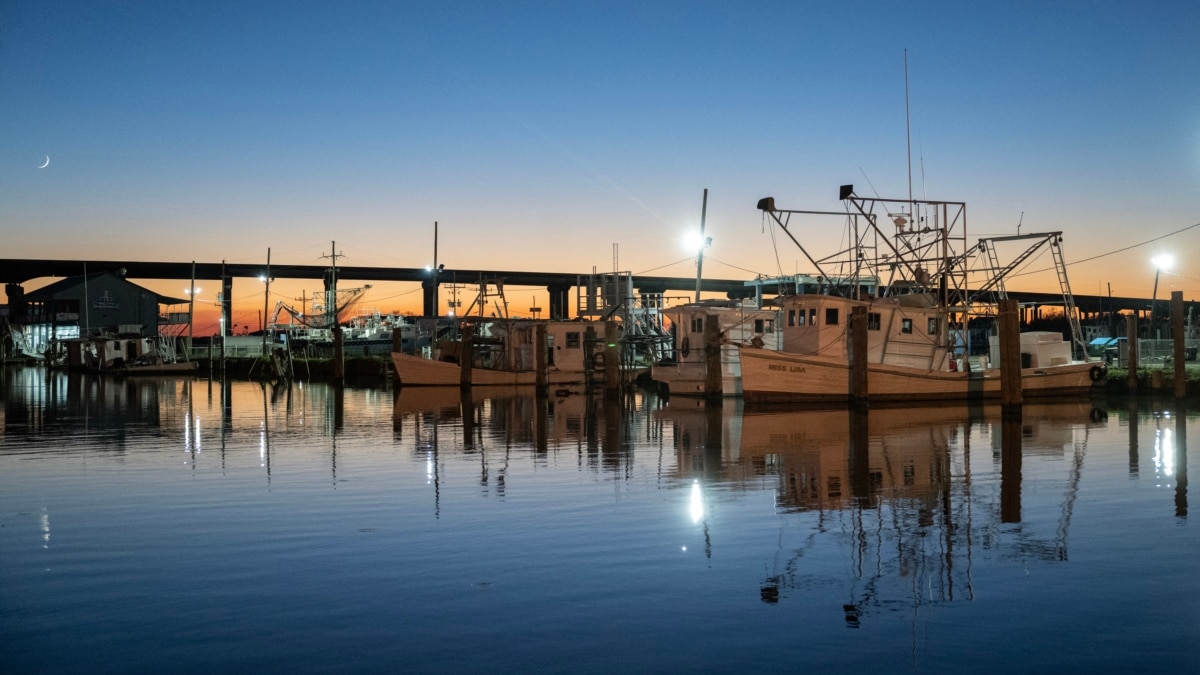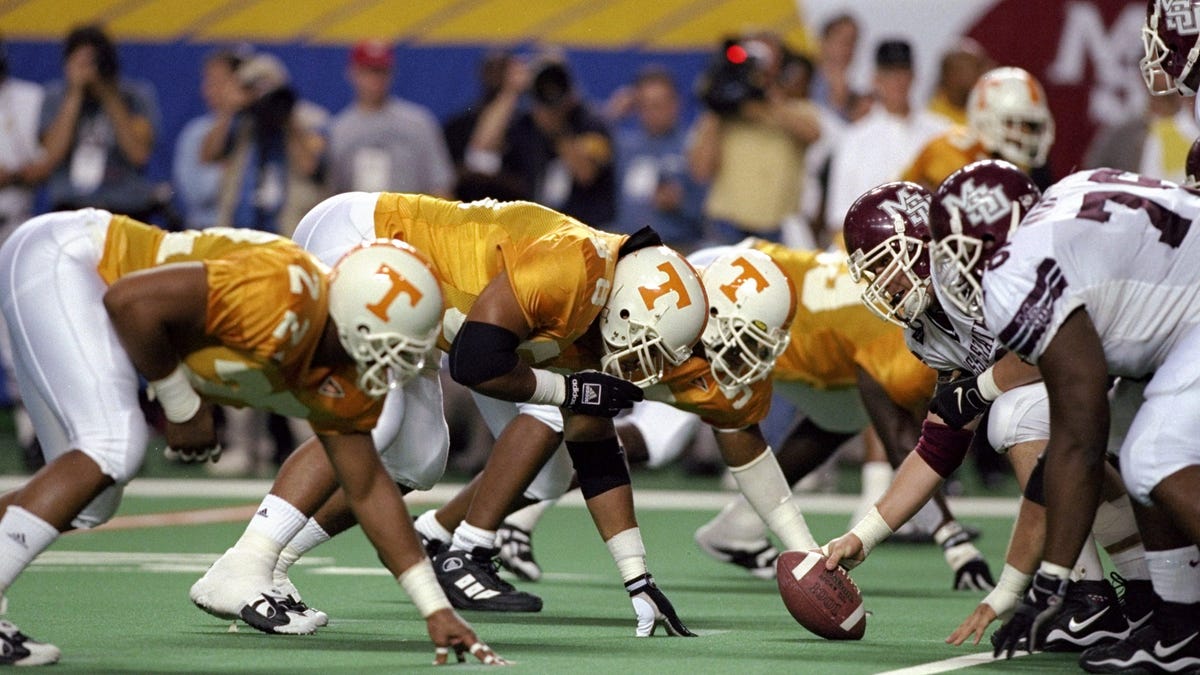Mississippi
Divergent States Working to Safeguard America’s Most Important River

Political leaders in the Mississippi River area are looking to form a multistate compact to manage threats from climate change, water pollution and drought-affected regions elsewhere.
“Twenty million people drink from the Mississippi River and its tributaries every day, including me and my family,” said Colin Wellenkamp, executive director of the Mississippi River Cities and Towns Initiative.
With the world’s fourth-largest basin, the Mississippi River supports more than 400 species of wildlife, has led to more than 350,000 jobs and generates more than $21 billion in annual tourism, fishing and recreation spending, according to the nonprofit group American Rivers.
“Whether you’re looking at it from a clean water standpoint, an ecological standpoint, a shipping of goods standpoint, or even from national security, there’s not a more important waterway in our country,” Wellenkamp told VOA. “We need to come together to protect and manage this critical resource.”
That’s what community and political leaders hope to do with a Mississippi River Compact to help unify lawmakers and residents along more than 3,700 kilometers (2,300 miles) of America’s most important river.
The compact’s framework would join 10 states in the collective management of river resources in consultation with stakeholders, including environmental groups, businesses and riverfront communities, to promote transparency and a shared sense of responsibility for the river’s well-being.
“When a farmer in a state upriver uses harmful fertilizer, for example, it affects the ability for fishermen to catch healthy fish at the bottom of the river in the Gulf of Mexico,” Wellenkamp said.
Nitrogen and phosphorus in runoff from lawns, sewage treatment plants, farmland and other sources along the river trigger algae blooms that choke off oxygen in water, killing marine life. Where the river meets the Gulf, that has caused a “dead zone” the National Oceanic and Atmospheric Administration estimates is costing U.S seafood and tourism industries more than $82 million per year.
“The problems facing the Mississippi River are many,” said Matt Rota, senior policy director at Healthy Gulf in New Orleans, Louisiana. “Only looking at the environmental side of things, we need to address water diversion protections, the Gulf dead zone, pollution, catastrophic flooding and — as we’re seeing right now in Louisiana — persistent droughts that are allowing saltwater from the Gulf to make our water undrinkable.
“These issues can’t be addressed state by state,” Rota continued. “They require a ‘whole river’ perspective. It’s vague right now exactly what a compact would cover, but there’s certain potential. From shipping to flooding to agriculture to wastewater disposal to drinking water and more, if a compact could prioritize the sustainability of the river, maybe it could help attract funds to help solve these problems.”
A “thousand-mile journey”
Tackling these challenges as a group could prove difficult.
“Solving the collective problems that span the river will require political cooperation among a very diverse group of states that don’t always agree on river management priorities, particularly around water quality issues such as nutrient pollution,” said David Strifling, director of the Water Law and Policy Initiative at Marquette University.
“Still,” he said, the “resolution to pursue the development of a Mississippi River Compact is the first step in a journey of a thousand miles.”
Wellenkamp acknowledged that states along the river do not always agree on what is best, “but when the river experiences record-breaking floods, we are all under threat. And when we have record-breaking droughts, we all suffer. When harmful chemicals find their way into the river up north, it hurts those of us in the South. And when manufacturing operations along the river in the south are hurting, it harms their headquarters in cities along the river in the North.”
In pursuing a compact, Strifling believes it is promising that political leaders in the Mississippi River Cities and Towns Initiative are rallying around issues that unify them, such as protections against diverting water to places outside the river basin.
Threat of “thirsty eyes”
The western region of the United States is experiencing a historic drought that U.S. Geological Survey data shows has resulted in a 20% drop in water flow along the important Colorado River over the last two decades.
“And conditions are only getting worse with climate change,” said Healthy Rivers senior policy advisor Kim Mitchell. “Forecasts show the Colorado River could lose another 25 to 30% of its flow by 2050. The region is desperate for solutions.”
Some western U.S. leaders are looking at water from the Mississippi and from its large tributary, the Missouri River, as part of the solution. Arizona Governor Doug Ducey last year agreed to spend $1 billion to investigate solutions that include pumping flood waters from the Mississippi River into the depleted Colorado.
“The idea of piping ‘excess’ Mississippi River water across the continental divide to supply water to the desert Southwest has persisted for decades no matter how unworkable it has been proven to be,” Trevor Russell, director of Friends of the Mississippi River’s Water Program, told VOA. “But not only would it just be a band aid for the problems being experienced out West, it would put the Mississippi River — America’s greatest river — at risk, too.”
That is where a Mississippi River compact could be especially beneficial.
“States with thirsty eyes have been wanting to put a straw in the Mississippi for years,” Wellenkamp said. “A Mississippi River Compact would finally put an end to that threat because no state along the river could give another state access to the river without the other states’ permission.”

Mississippi
Tennessee’s all-time football results versus Mississippi State

No. 15 Tennessee (3-1, 0-1 SEC) will play for its first Southeastern Conference win in 2025 during Week 5. Mississippi State (4-0) will host the Vols on Saturday at Davis Wade Stadium in Starkville, Mississippi.
Kickoff is scheduled for 4:15 p.m. EDT and SEC Network will televise the contest.
Saturday will mark the 38th game between the Vols and Bulldogs all time, dating to 1907.
Tennessee leads the football series versus Mississippi State, 30-16-1. The Vols have won the last two meetings, including a, 33-14, victory last season at Neyland Stadium.
Below are all-time football results between the Vols and Bulldogs.
Tennessee’s all-time football results versus Mississippi State
1907: Tennessee 11, Mississippi State 4
1910: Mississippi State 48, Tennessee 0
1915: Mississippi State 10, Tennessee 0
1919: Mississippi State 6, Tennessee 0
1920: Mississippi State 13 Tennessee 7
1921: Tennessee 14, Mississippi State 7
1922: Tennessee 31, Mississippi State 3
1923: Tennessee 7, Mississippi State 3
1924: Mississippi State 7, Tennessee 2
1925: Tennessee 14, Mississippi State 9
1926: Tennessee 33, Mississippi State 0
1932: Tennessee 31, Mississippi State 0
1933: Tennessee 20, Mississippi State 0
1934: Tennessee 14, Mississippi State 0
1948: Mississippi State 21, Tennessee 6
1949: Tennessee 10, Mississippi State 0
1950: Mississippi State 7, Tennessee 0
1951: Tennessee 14, Mississippi State 0
1952: Tennessee 14, Tennessee 7
1953: Mississippi State 26, Tennessee 0
1954: Tennessee 19, Mississippi State 7
1955: Mississippi State 13, Tennessee 7
1957: Tennessee 14, Mississippi State 9
1958: Tennessee 13, Mississippi State 8
1959: Tennessee 22, Mississippi State 6
1960: Tennessee 0, Mississippi State 0
1961: Tennessee 17, Mississippi State 3
1962: Mississippi State 7, Tennessee 6
1963: Mississippi State 7, Tennessee 0
1964: Tennessee 14, Mississippi 13
1971: Tennessee 10, Mississippi State 7
1978: Mississippi State 34, Tennessee 21
1979: Mississippi State 28, Tennessee 9
1986: Mississippi State 27, Tennessee 23
1987: Tennessee 38, Mississippi State 10
1990: Tennessee 40, Mississippi State 7
1991: Tennessee 26, Mississippi State 24
1994: Mississippi State 24, Tennessee 21
1995: Tennessee 52, Mississippi State 14
1998: Tennessee 24, Mississippi State 14 — SEC championship game
2002: Tennessee 35, Mississippi State 17
2003: Tennessee 59, Mississippi State 21
2007: Tennessee 33, Mississippi State 21
2008: Tennessee 34, Mississippi State 3
2012: Mississippi State 41, Tennessee 31
2019: Tennessee 20, Mississippi State 10
2024: Tennessee 33, Tennessee 14
Follow Vols Wire on Facebook and X (formerly Twitter).
Mississippi
Mississippi State football doesn’t miss Mario Craver, other overreactions to Alcorn State win

STARKVILLE — It’s difficult to determine what Mississippi State football’s lopsided 63-0 win against Alcorn State in Week 3 means for the outlook of the season, but there was certainly no indication of a potential upset.
The Bulldogs (3-0) scored touchdowns on four straight drives to begin the game and led by 42 points before halftime. The third and fourth quarters at Davis Wade Stadium were reduced from 15 to 10 minutes because of the score. MSU and second-year coach Jeff Lebby are 3-0 for the first time since 2018.
Here are four overreactions to MSU’s win before it hosts Northern Illinois (1-1) on Sept. 20 (3:15 p.m., SEC Network).
Mississippi State fans will storm the field after another upset win
Mississippi State has qualities of a team than can pull off another upset like it did to then-No. 10 Arizona State in Week 2. When the offense, defense and special teams are playing soundly, MSU is miles better than last season.
The offense, led by quarterback Blake Shapen, can score in bunches and do so quickly. The defense can string together multiple stops in a row and is forcing two turnovers per game. Kyle Ferrie has yet to miss a field goal, while Anthony Evans III is second in the SEC with 128 punt return yards.
Mississippi State’s four SEC home games are all against ranked opponents — Tennessee, Texas, Georgia and Ole Miss — so don’t be surprised if fans storm the field again in one of those games.
Kamario Taylor is a future Heisman Trophy contender
There have been glimpses of freshman quarterback Kamario Taylor and you can already tell why everyone is so excited about the four-star signee from Noxubee County.
He scored his first career touchdown in the second quarter against Alcorn State, a 42-yard on-the-money throw to Brenen Thompson. Taylor also had a great rush when he read the edge defender, tucked the ball and ran for 19 yards.
Taylor will have to wait for next season to compete for the starting job, but he has the makings to be a special player.
Mississippi State is fine without Mario Craver, Kevin Coleman Jr.
Mario Craver leads college football with 443 receiving yards for Texas A&M. Kevin Coleman Jr. of Missouri is tied for fifth nationally with 24 receptions. Both transferred after last season ended, but Mississippi State is doing just fine without them.
Evans and Thompson have been a terrific duo at wide receiver. Evans, a Georgia transfer, has filled Coleman’s role at MSU as a shorter-yard target with 17 receptions for 210 yards and two touchdowns. Thompson, an Oklahoma transfer, has played Craver’s role as a downfield burner with 15 catches for 278 yards and three touchdowns.
It’s unlikely that Mississippi State could’ve had all four of them on the same team, but losing two great wide receivers hasn’t hurt this season.
Mississippi State’s pass rush will be a weakness in SEC play
Will Whitson was playing like a premier pass rusher before his season-ending injury in Week 2. The Bulldogs haven’t been great at generating pressure though outside of him.
Whitson has two of MSU’s four sacks. He’s also still the only player for MSU with more than one tackle for loss.
The defensive front looks improved from last season, but will still need to be better for SEC standards.
Sam Sklar is the Mississippi State beat reporter for The Clarion Ledger. Email him at ssklar@gannett.com and follow him on X @sklarsam_.
Mississippi
Bulldog Roundup: Mississippi State cross country sets new mark at Southern Showcase

Friday was a special day for Mississippi State sports and it was the cross country team that got things started for the university.
The Bulldogs put in a record-breaking performance to finish in second place at the Southern Showcase in Huntsville, Ala.
“We’re really pleased with how the team raced today,” said assistant coach Erinn Stemnan-Fahey. “Today, they showed the strides the program has made towards improvement. We’re really excited to keep building on the momentum for the rest of the season.”
The team improved its finish from last year by 6 places, with three athletes finishing in the top 20 overall. Nelly Jemeli led the Bulldogs, literally. Jemeli finished fourth overall in 16-minutes, 36.1 seconds.
Louise Stonham finished 17th in her first cross country race in the maroon and white with a massive personal best of 17:10.0. Gabrielle Boulay and Hunter Anderson rounded out the scorers for state, with the latter running a personal best of 17:31.0.
Women’s Tennis: Mississippi State at Blue Gray Classic
Women’s Tennis: Mississippi State at Debbie Southern Classic
Men’s Tennis: ITF Fayetteville M15 Futures
Cross Country: Southern Showcase, Huntsville, Ala., 2nd Place
Soccer: Mississippi State 3, No. 1 Tennessee 2
Football: Alcorn State at Mississippi State
Women’s Tennis: Mississippi State at Blue Gray Classic
Women’s Tennis: Mississippi State at Debbie Southern Classic
Men’s Tennis: ITF Fayetteville M15 Futures
Volleyball: Mississippi State at Mercer, Noon
“One night, Bilbo got particularly feisty, so my dad and I drove him out to woods. Once we found a good spot, we stopped and I put him on the ground and took his collar off. He kind of ambled about, taking in the new surroundings. I preface this next part by saying I do think humans and animals share an unspoken understanding, to some extent. That’s why it’s so easy to bond with pets. So this is how I remember saying goodbye to Bilbo: He wandered 10 yards away or so from the truck, and then he turned and looked at us and kind of had this expression like, ‘It was nice knowing ya.’ It was this moment where like, both I knew and he knew that we’d had some good times, but this was it.”
– Mike Leach
POV you just beat the #1 team in the country 😤#HailState | @HailStateSOC pic.twitter.com/0aaI6iacbz
— Mississippi State Athletics (@HailState) September 13, 2025
-

 Finance1 week ago
Finance1 week agoReimagining Finance: Derek Kudsee on Coda’s AI-Powered Future
-

 World1 week ago
World1 week agoSyria’s new president takes center stage at UNGA as concerns linger over terrorist past
-
North Dakota1 week ago
Board approves Brent Sanford as new ‘commissioner’ of North Dakota University System
-

 Technology1 week ago
Technology1 week agoThese earbuds include a tiny wired microphone you can hold
-

 Culture1 week ago
Culture1 week agoTest Your Memory of These Classic Books for Young Readers
-

 Crypto7 days ago
Crypto7 days agoTexas brothers charged in cryptocurrency kidnapping, robbery in MN
-

 Crypto1 week ago
Crypto1 week agoEU Enforcers Arrest 5 Over €100M Cryptocurrency Scam – Law360
-

 Rhode Island1 week ago
Rhode Island1 week agoThe Ocean State’s Bond With Robert Redford




















